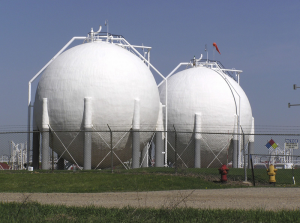 Natural gas fell on Thursday after the EIA reported a larger-than-expected inventory build and extended losses to a third day on Friday as most of the US remained engulfed by seasonal or warmer weather.
Natural gas fell on Thursday after the EIA reported a larger-than-expected inventory build and extended losses to a third day on Friday as most of the US remained engulfed by seasonal or warmer weather.
Natural gas for delivery in May traded 1.15% lower at $2.657 per million British thermal units at 9:36 GMT, shifting in a daily range of $2.697-$2.651. The contract slid 1.9% yesterday to $2.688 per mBtu and is down 5.2% for the week so far.
The Energy Information Administration reported on Thursday that US natural gas stockpiles rose by 12 billion cubic feet in the week ended March 20th, exceeding analystss median estimate of a build of 6-9 bcf. The five-year average withdrawal for the period is 19 billion cubic feet, while stockpiles slid by 56 bcf a year ago.
Total gas held in US storage hubs amounted to 1.479 trillion cubic feet, narrowing a deficit to the five-year average inventories of 1.673 trillion to 11.6% from 13.3% a week earlier. The surplus over year-ago stockpile levels expanded to 63.6% from 52.8% last week.
Widespread mild weather across the US further weighed on sentiment, although losses were limited by a series of cold blasts over the North that will induce periods of stronger heating demand.
According to NatGasWeather.com, natural gas consumption in the US will be low-moderate compared to normal through April 2nd, and locally high this weekend, with a warmer weather trend for the southern US over the following seven days.
The latest in a series of Canadian cold blasts is sweeping deep into the Southeast, pushing temperatures across the eastern half of the US to 10-20 degrees Fahrenheit below usual and inducing stronger than usual local heating demand. The Great Lakes and Northeast will see periods of rain and snow snow, and a reinforcing cool blast will follow on Sunday into Monday before a warm-up takes effect during the middle of the week. The Northwest will see cool conditions with rain and snow over the coming week, while the rest of the West remains mainly warm and dry and the southern US enjoys mild weather.
Canadian systems will be quick to return after next weeks warm-up across the Great Lakes and eastern US, NatGasWeather.com reported, carrying rain, snow and below-normal temperatures. The country’s southern and central regions will be slightly warmer than usual during the first week of April, while the West is divided into a warmer lower half and a cooler Northwest.
A close eye must be kept on weather developments in the second week of April as weather data remains unclear on how much colder Canadian air will infiltrate the north-eastern US.
Next week’s inventory report, due on April 2nd, may reflect a near-average or slightly thinner inventory decline as widespread seasonal and warmer weather dominated the majority of the country this week, while the north-eastern US saw a cold break mid-week. The five-year average withdrawal for the week ending March 27th is -22 bcf, while gas in storage declined by 71 bcf a year ago.
The following report, due on April 9th, will likely bring a small inventory build instead of an average decline as widespread mild weather persists. The five-year average inventory drop for the seven days ended April 3rd is -2 billion cubic feet, while stockpiles declined by 8 bcf during the comparable period a year earlier.
Readings
According to AccuWeather.com, New York will see temperatures range at 26-40 degrees on March 28th, compared to the average 39-54, before highs return to the mid-low 50s as of March 30th. Readings in Chicago will max out at 31-35 degrees on March 28-29th, below the usual 52, before rebounding to the mid-high 50s as of March 31st.
Down South, Texas City will see temperatures peak at 75-77 degrees between March 29th and April 4th, compared to the average 73-74, likely followed by another week of near-seasonal conditions. On the West coast, the high in Los Angeles today will be 92 degrees, 21 above usual, before easing to the upper 70s and lower 80s through April 4th.
Pivot points
According to Binary Tribune’s daily analysis, May natural gas futures’ central pivot point stands at $2.710. In case the contract penetrates the first resistance level at $2.753 per million British thermal units, it will encounter next resistance at $2.818. If breached, upside movement may attempt to advance to $2.861 per mBtu.
If the energy source drops below its S1 level at $2.645 per mBtu, it will next see support at $2.602. If the second key support zone is breached, the power-station fuel’s downward movement may extend to $2.537 per mBtu.





